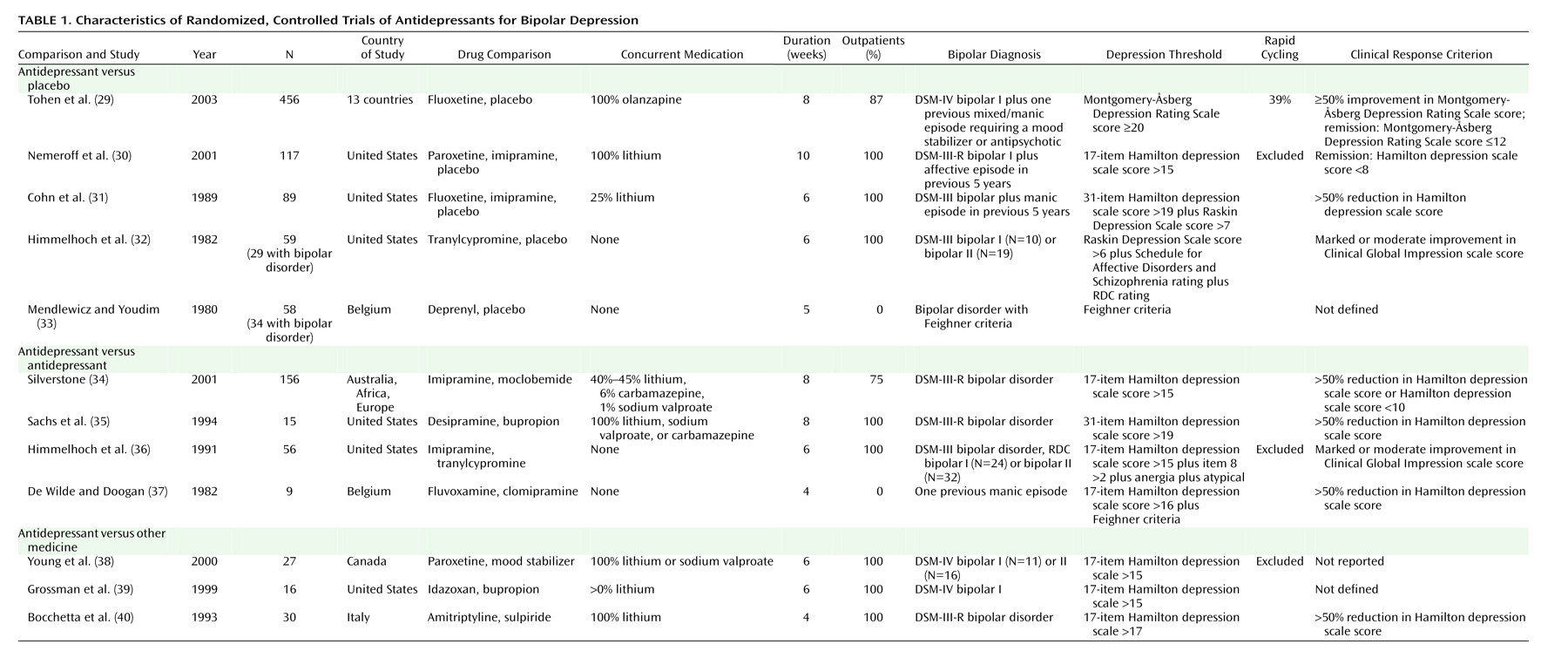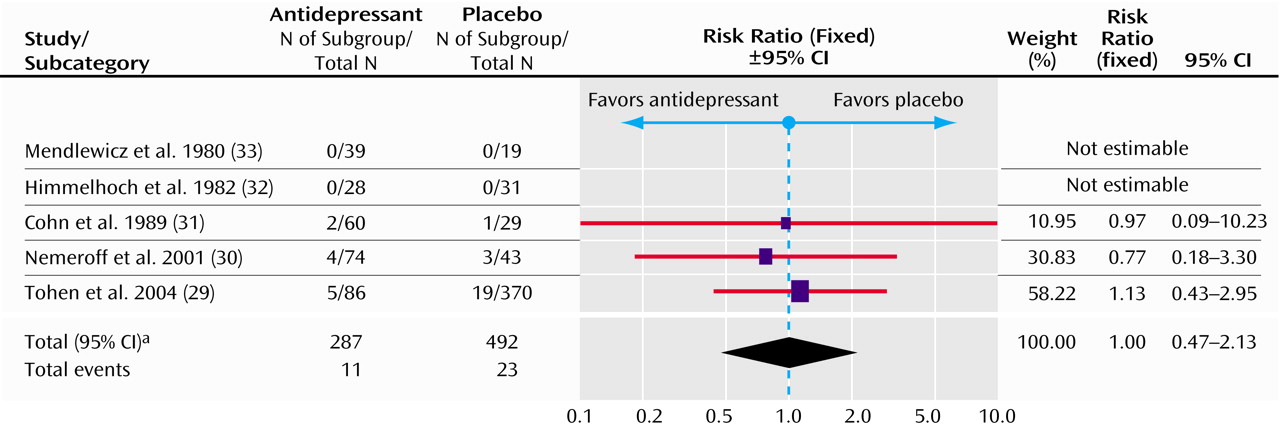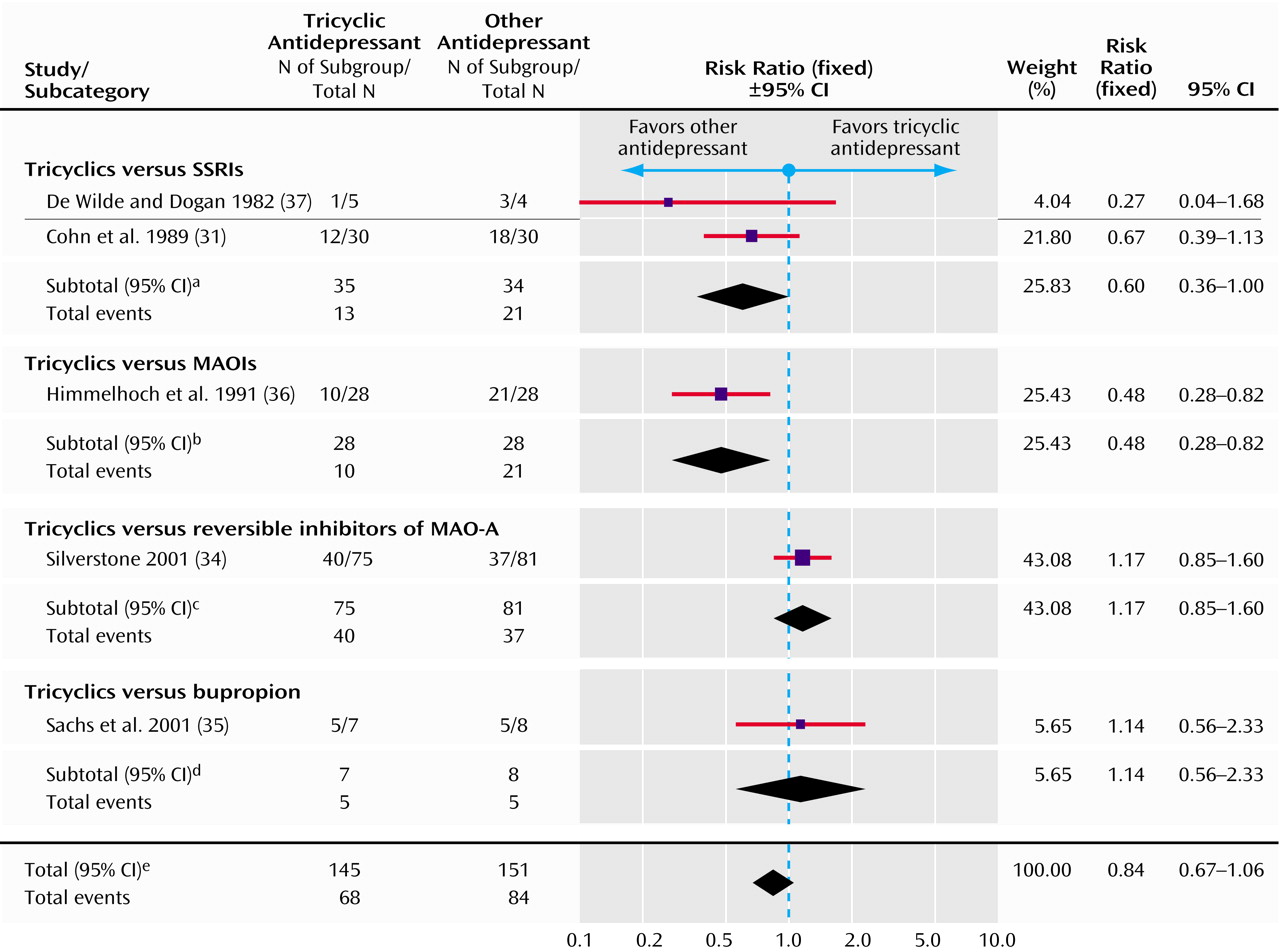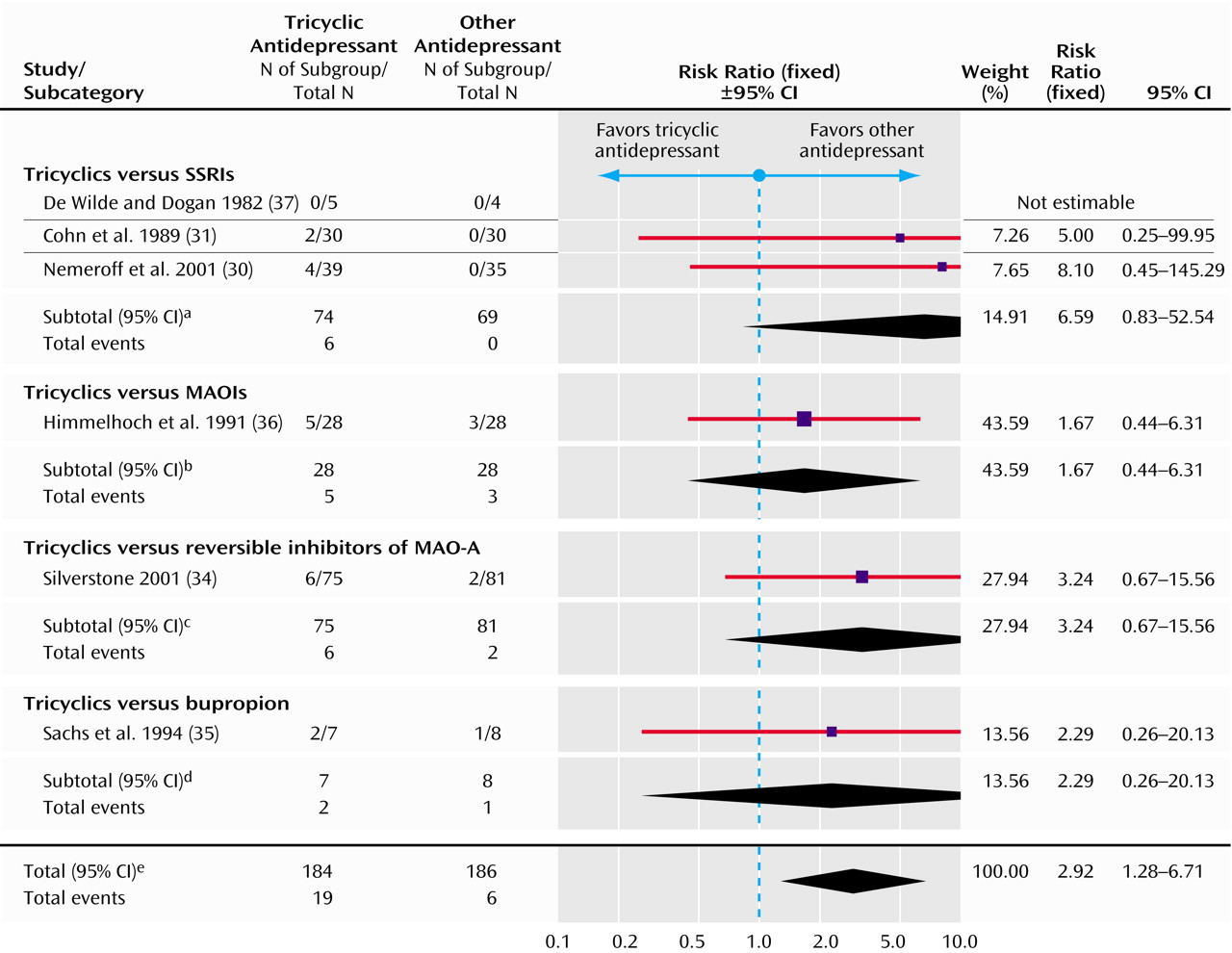Antidepressants for Bipolar Depression: A Systematic Review of Randomized, Controlled Trials
Abstract
Method
Studies Included
Search Strategy
Methods of the Review
Data Analysis
Results
Description of Studies
Design Characteristics
Outcomes
Antidepressants Versus Placebo
Clinical Response
Clinical Remission
Switching to Mania
Overall Acceptability
Sensitivity Analysis
Tricyclic Antidepressants Versus Other Antidepressants
Clinical Response
Clinical Remission
Switching to Mania
Overall Acceptability
Subgroups
Sensitivity Analysis
Antidepressants Versus Other Medications
Discussion
Comparison With Previous Reviews
Antidepressant Efficacy
Switching to Mania
Differences Between Antidepressants
The Antidepressant Effect of Mood Stabilizers
Conclusions






Footnote
References
Information & Authors
Information
Published In
History
Authors
Metrics & Citations
Metrics
Citations
Export Citations
If you have the appropriate software installed, you can download article citation data to the citation manager of your choice. Simply select your manager software from the list below and click Download.
For more information or tips please see 'Downloading to a citation manager' in the Help menu.
View Options
View options
PDF/EPUB
View PDF/EPUBGet Access
Login options
Already a subscriber? Access your subscription through your login credentials or your institution for full access to this article.
Personal login Institutional Login Open Athens loginNot a subscriber?
PsychiatryOnline subscription options offer access to the DSM-5-TR® library, books, journals, CME, and patient resources. This all-in-one virtual library provides psychiatrists and mental health professionals with key resources for diagnosis, treatment, research, and professional development.
Need more help? PsychiatryOnline Customer Service may be reached by emailing [email protected] or by calling 800-368-5777 (in the U.S.) or 703-907-7322 (outside the U.S.).

